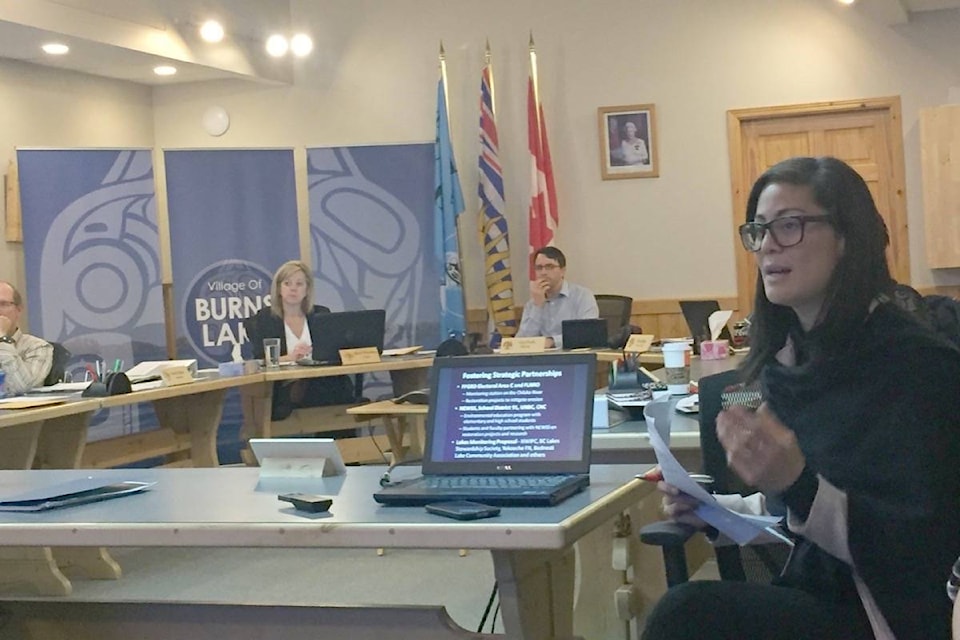The Nechako Watershed Roundtable (NWR) has asked Burns Lake council for $1700 to implement strategies to improve the health of the Nechako Watershed.
The strategies report was launched in October 2016, providing an overview of watershed issues and concerns, as well as 33 proposed actions to advance watershed health. However, the NWR currently does not have enough funding to fully implement the strategy.
READ MORE: Still no funding for Nechako watershed’s strategy
“We’re looking for $1700 from each of the 12 local governments within the Nechako Watershed boundary,” explained Theresa Fresco, assistant regional manager for the Fraser Basin Council. “This will help to support our operations and projects over the next year as well as give us some time to secure a more sustained source of funding.”
Local governments within the watershed boundaries include Burns Lake, Vanderhoof, Fraser Lake, Fort St. James and Prince George, as well as Regional District of Bulkley-Nechako Electoral Areas B, C, D, E and F, and Regional District of Fraser-Fort George Electoral Areas A and C. The total local government contribution requested is $20,400.
So far, four communities have agreed to contribute to the NWR - Vanderhoof, Fort St. James and Regional District of Fraser-Fort George’s Electoral Areas A and C. The NWR has also secured $35,000 annually for three years from the Real Estate Foundation of B.C., contingent on matching funds, and $12,550 from the Fraser Basin Council.
READ MORE: Improving the health of the Nechako watershed
The NWR also plans to request funding from the provincial government, federal grants and programs, and the private sector.
According to Fresco, the approximate cost of running the NWR is $200,000 per year, which includes operational expenses ($90,000) and project expenses ($110,000).
“We weren’t able to get together funds this year, so we had to scale back for the 2017/18 year,” she explained. “We kept the core operations the same, but we focused on three key areas for the implementation of the strategy.”
These areas include engaging with decision makers of all jurisdictions to explore what their priorities are, as well as building a communications plan and coming up with public education tools and processes.
Fresco said Burns Lake’s official community plan has some areas of alignment with the NWR’s strategies. These include maintaining high water quality, access to waterfront and outdoor tourism.
Burns Lake council is yet to announce if the village will be supporting this initiative.
The NWR, which was created in 2015 to improve the health of the Nechako watershed, includes representation from First Nations, the provincial government, local governments and other agencies and organizations with interests in the watershed.
@flavio_nienow
newsroom@ldnews.net
Like us on Facebook and follow us on Twitter.
